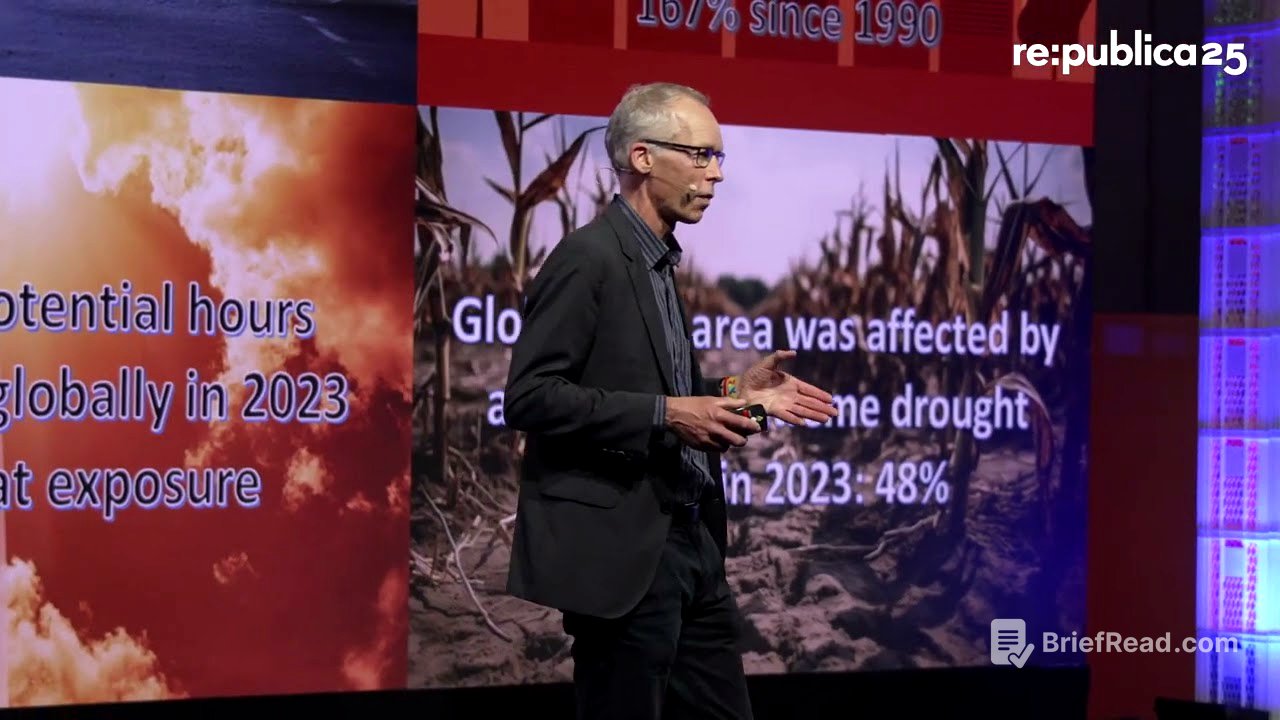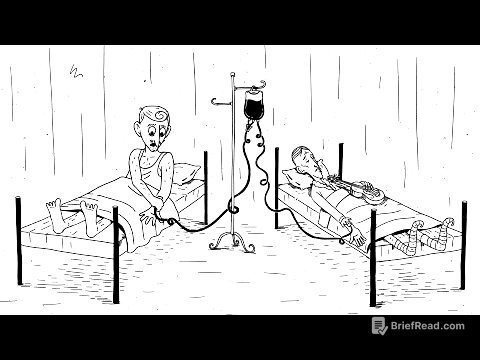TLDR;
The presentation addresses the critical state of Earth's stability, emphasizing the urgent need for rapid and large-scale action to reverse the current trajectory of environmental degradation. It highlights the unprecedented acceleration of global warming, the crossing of planetary boundaries, and the potential for irreversible tipping points. The speaker underscores the importance of adhering to the 1.5°C boundary, phasing out fossil fuels, and transforming global systems to ensure a sustainable future. Despite the challenges, the presentation conveys a message of hope, emphasizing the availability of solutions and the potential for a stronger, healthier, and more sustainable world.
- The Earth is facing a decisive moment due to risks of destabilizing the planet's stability.
- Evidence shows an unprecedented acceleration of warming and crossing of planetary boundaries.
- Staying within the 1.5°C boundary and phasing out fossil fuels are crucial for a sustainable future.
Introduction: A Decisive Moment for Humanity [0:24]
The speaker emphasizes the critical juncture humanity faces regarding the planet's future, highlighting not only geopolitical issues and assaults on science but also the risk of destabilizing the Earth's stability. For the first time in history, there is a serious consideration of the risk of irreversible damage to the life support systems that have allowed the world to develop over the past 250,000 years. The need for speed and scale is crucial to return to a safe operating space for a stable and habitable planet.
The Great Acceleration: Evidence of Environmental Impact [2:03]
The evidence of environmental impact begins with the "Great Acceleration," illustrating hockey stick graphs from 1750 to the present. While industrialization has brought positives like improved health and life conditions, it has also led to massive GDP growth and resource exploitation. The focus is often on the carbon dioxide hockey stick, but any parameter related to human well-being shows a similar trend. Since the 1950s, there has been an exponential rise in biodiversity overexploitation, acid rain, deforestation, and other pressures, leading to the conclusion that we have entered a new geological epoch called the Anthropocene, where humans are the dominant force of change.
Exceeding 1.5°C: Shocking Data and Observations [3:51]
In 2024, the global mean surface temperature rise exceeded 1.5°C, the warmest temperature in 100,000 years, pushing us outside the Holocene range. Recent scientific observations have been shocking, with air and sea surface temperatures showing unprecedented jumps. In 2023, there was a 0.3°C jump in temperature, far exceeding the normal annual increase. Despite entering a La Niña phase, temperatures are not cooling back as expected, leading to concerns about a potential shift in the trajectory of warming.
Candidates for Accelerated Warming [7:13]
The scientific community is actively discussing the reasons for this accelerated warming. Candidates include natural variability like the El Niño oscillation and solar cycles. Paradoxically, policies reducing air pollutants, such as sulfate emissions from commercial shipping, may also contribute by allowing more solar radiation to reach the surface. Changes in the hydrological cycle and a potential reduction in the biosphere's capacity to absorb carbon are also considered. The Amazon rainforest, Earth's richest ecosystem, has already tipped over and become a carbon source, signaling a loss of resilience.
Climate Sensitivity and Global Carbon Budget [9:21]
There is concern that the climate sensitivity, traditionally estimated at 3°C per doubling of carbon dioxide, may be higher due to underestimated loss of resilience in the Earth's system. If climate sensitivity is higher, the global carbon budget becomes even smaller, requiring an even faster phase-out of fossil fuels. The costs of exceeding 1.5°C are evident in the increased frequency and intensity of droughts, fires, floods, and heat waves, leading to significant economic impacts and loss of labor productivity.
Leaving the Corridor of Life: Historical Temperature Data [11:31]
The planet is leaving the "corridor of life," as evidenced by ice core data from the past 400,000 years. For the last 10,000 years, the planet has remained remarkably stable, with temperatures varying within a narrow range. The Emian period, 110,000 years ago, peaked but never exceeded 2°C. This stability has enabled human civilization to develop. Pushing ourselves outside this corridor poses significant risks to the biophysical systems we depend on.
Tipping Points: Risks and Interactions [14:37]
The planet is a self-regulating system with interactions and feedbacks. Pushing these systems too far can lead to crossing thresholds and triggering self-amplifying positive feedbacks. Sixteen tipping elements regulate the climate system, and many are at risk of crossing thresholds at relatively low temperatures. These tipping points can interact and lead to cascade impacts. For example, the melting of the Greenland ice sheet can slow down the thermohaline engine (AMOC), impacting monsoon systems and the melting of the West Antarctic ice sheet.
Planetary Boundaries: Defining a Safe Operating Space [19:34]
Quantifying the safe operating space for humanity involves identifying the Earth system processes that regulate stability and resilience. Nine planetary boundaries, including climate, biodiversity, land configuration, and chemical loading, have been quantified. Current assessments show that six of these boundaries are outside the safe space, supporting concerns about accelerated warming. To hold 1.5°C after a period of overshoot, carbon dioxide removal technologies and a transformation of the global agriculture system are necessary.
Exponential Trajectories and Decarbonized Solutions [25:26]
Achieving the necessary transformations requires S-curves of exponential positive trajectories. Double-digit adoption of decarbonized solutions is emerging, with renewable energy and electric vehicles showing significant progress. Even difficult-to-abate sectors like steel, cement, and fertilizer are seeing potential solutions. While challenges remain, the assessment indicates that these problems are not impossible to solve.
Conclusion: Danger, Opportunity, and the Path Forward [28:03]
The planet is in danger, with multiple planetary boundaries outside the safe space. However, we are not yet in a red zone where a turnaround is impossible. The fossil fuel era is at the beginning of its end, and there is still a chance to turn things around with available solutions. By standing up with science, we can create a stronger, healthier, more secure, and more competitive future.








